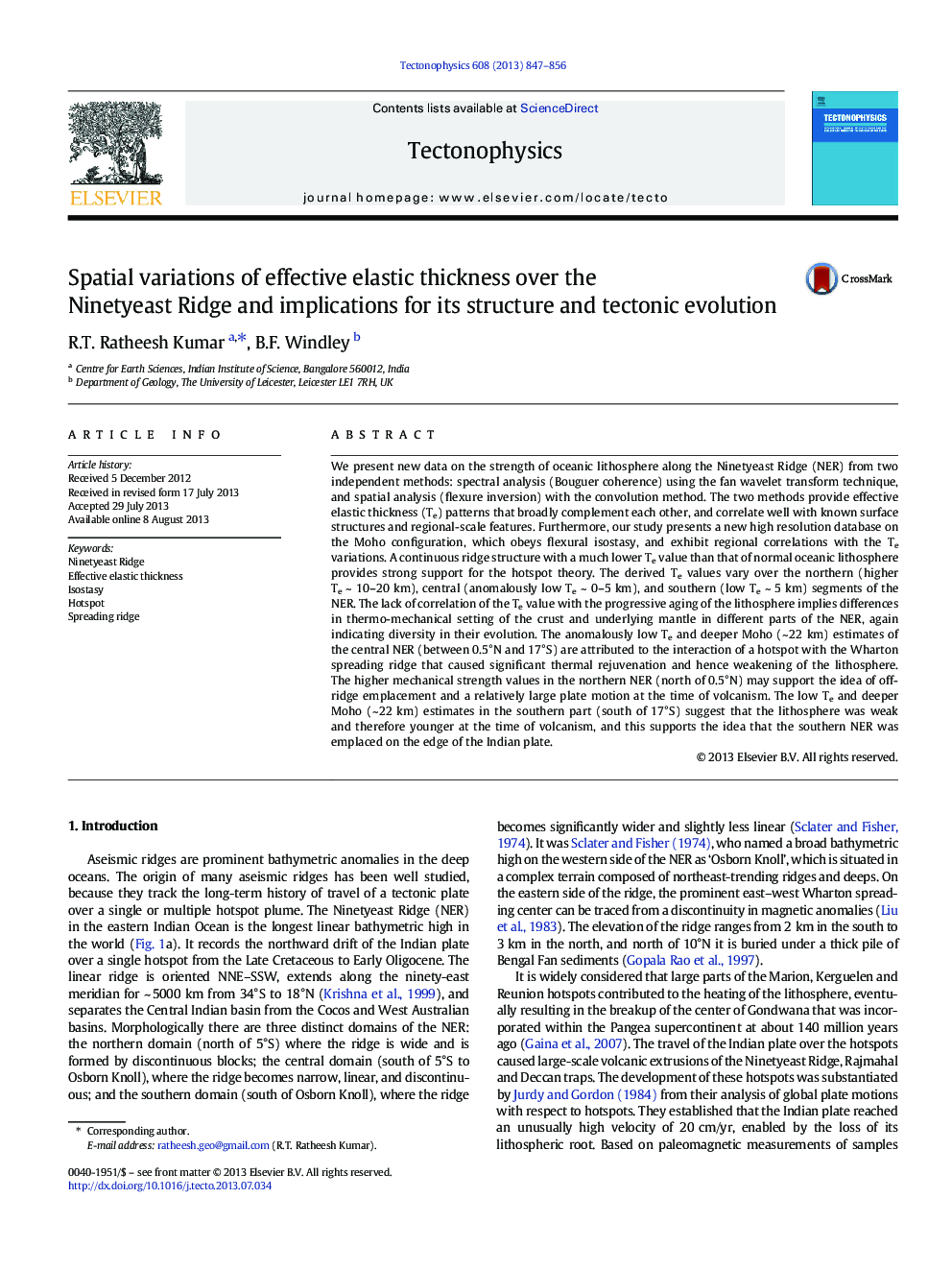| کد مقاله | کد نشریه | سال انتشار | مقاله انگلیسی | نسخه تمام متن |
|---|---|---|---|---|
| 6434010 | 1636779 | 2013 | 10 صفحه PDF | دانلود رایگان |
- Spatio-spectral estimates of effective elastic thickness along the Ninetyeast Ridge
- Moho depth estimates using gravity inversion and flexural inversion techniques
- The derived Te varies over northern, central and southern parts of the ridge.
- Results provide an idea of the evolution of the Ninetyeast Ridge.
We present new data on the strength of oceanic lithosphere along the Ninetyeast Ridge (NER) from two independent methods: spectral analysis (Bouguer coherence) using the fan wavelet transform technique, and spatial analysis (flexure inversion) with the convolution method. The two methods provide effective elastic thickness (Te) patterns that broadly complement each other, and correlate well with known surface structures and regional-scale features. Furthermore, our study presents a new high resolution database on the Moho configuration, which obeys flexural isostasy, and exhibit regional correlations with the Te variations. A continuous ridge structure with a much lower Te value than that of normal oceanic lithosphere provides strong support for the hotspot theory. The derived Te values vary over the northern (higher Te ~ 10-20 km), central (anomalously low Te ~ 0-5 km), and southern (low Te ~ 5 km) segments of the NER. The lack of correlation of the Te value with the progressive aging of the lithosphere implies differences in thermo-mechanical setting of the crust and underlying mantle in different parts of the NER, again indicating diversity in their evolution. The anomalously low Te and deeper Moho (~ 22 km) estimates of the central NER (between 0.5°N and 17°S) are attributed to the interaction of a hotspot with the Wharton spreading ridge that caused significant thermal rejuvenation and hence weakening of the lithosphere. The higher mechanical strength values in the northern NER (north of 0.5°N) may support the idea of off-ridge emplacement and a relatively large plate motion at the time of volcanism. The low Te and deeper Moho (~ 22 km) estimates in the southern part (south of 17°S) suggest that the lithosphere was weak and therefore younger at the time of volcanism, and this supports the idea that the southern NER was emplaced on the edge of the Indian plate.
Journal: Tectonophysics - Volume 608, 26 November 2013, Pages 847-856
